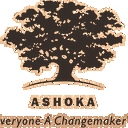Dune Lankard, on the Future of Climate-Changing-Everything
Hi, I’m Dune, creator of: Eyak Preservation Council and the Native Conservancy, which we set up in the wake of the 1989 Exxon Valdez spill — we have in the years since taken on numerous and endless frontline issues to protect our ancestral home, wild salmon runs, the ocean way of life, and support similar efforts elsewhere.
Home base: Cordova, Alaska. We’re a coastal town 150 miles southeast of Anchorage on the Copper River Delta and Prince William Sound. My Eyak ancestors migrated from the interior thousands of years ago and decided to camp at this spot along the coastal temperate rainforest until it quit raining. We’re still here! There are 400 of us (Eyaks) living.
10 years ago, I said: Our wild fishing stocks, once robust, are beginning to fail. We need to prepare for less fish, smaller fish, and no fish, rising oceans, permafrost and glaciers melting at unprecedented rates, and food insecurity issues.
Now, I say: We need to get creative, to embed regenerative thinking/acting in all our decisions. As in: If it’s not regenerative, don’t do it. For coastal communities like ours, this means protecting wild salmon species, habitat for all species, unlocking tidal energy, current turbines, wind and solar. Building smaller homes on stilts and/or wheels. Maintaining and/or restoring healthy baseline ecosystems so they can support us into the future because everything is connected. For example, wild salmon are actually forest animals — they are born in the forest, they travel along cool rivers to the ocean, returning 2–5 years later to the same rivers and forest, to spawn and die.
Something people aren’t talking about but should be: Food sovereignty and climate resiliency — the need for communities to regain control of their food sources. This means developing new technologies to process and preserve food, like portable wave energy freezers, and re-learning Indigenous and subsistence ways of preserving food — smoked, pickled, dried and high-quality freezing — and harvesting from wild sources.
Early inspiration: My mother Rosie. She told us — her 7 little Indians (children) — that “there is nothing more powerful in life than belief in yourself and your dreams.” Another important person was a family friend, bush pilot Tom Parker, who was a kind of cultural guide to me and bridge to the world outside Cordova.
I’m learning: Everything I can about resiliency, community needs for processing and cold storage, kelp farming (understanding what GreenWave and Bren Smith want to do), and different ways to heal the oceans during these climate changing times. I’m trying to learn as much as I can from people who choose to protect this way of life or live from the land and the sea — and use this knowledge to make us all wiser.
On my playlist: Radio Paradise. Krishna Das. And I make time for Calm App every morning, and Tina Turner’s Nam Myoho Renge Kyo — it’s a Buddhist chant turned into a beautiful song. It melts away problems, builds inner strength, inspires solutions.
I’m inspired by: Many changemakers. Ayana Young, a futurist, conservationist and creator of the podcast For the Wild; Indigenous writer and food security expert Elizabeth Hoover, see her book: Indigenous Food Sovereignty in the United States: Restoring Cultural Knowledge, Protecting Environments, and Regaining Health; in my Ashoka network, my friend David Green. David structures funds so that social entrepreneurs can access low-interest capital and not give up too much equity in their start-ups. He helped me understand that we can scale up by scaling down — in other words, communities can take control of their food sources, process and market it direct themselves, instead of having large companies do everything for them and own them. Instead, find partners, allies, pollinators, and direct markets and make it all happen for themselves.
I’m hopeful about: What we can do if we all step up to be citizen scientists and active stewards everyday. I look forward to teaching my daughter Ananda Rose to live off the oceans and the land as I was taught by my family. She is 9 now and will soon be learning how to run our kelping boats, how to farm the sea and help heal our oceans for her generation. Ananda’s also a dogsledder (she has 14 dogs that she trains and races) and one of the first Alaska youth plaintiffs to join Our Children’s Trust Atmospheric Trust lawsuit that’s going to the U.S. Supreme Court. See picture below.
Next up, let’s hear from: Nick Tilsen, a fellow Ashoka Fellow. Nick’s creating a resiliency-based community model on the Pine Ridge Reservation in South Dakota that’s regenerative and so important for our ailing planet. Nick’s father Mark Tilsen (who helped manage the Indigo Girls “Honor the Earth” benefit concerts developed in partnership with Indigenous communities and the creator of the “Tanka Bar”) let Nick to come to Alaska to visit us before his freshman year of high school. He was one of our first EPC interns, commercially fished in Alaska for a season or two, then went on to be become an amazing Indigenous leader for these earth changing times.
Dune is from the Eagle Clan and his Eyak name Jamachakih translation is “Little Bird (in the forest) that won’t shut up.” Read more about Dune, who joined Ashoka in 2007, here.
Photo: Dune and his daughter Ananda Rose Lankard getting ready for a hike on Sheridan Glacier, near their Copper River Delta home in Cordova, Alaska.
Photo credit (both pictures): Carol Hoover, EPC Executive Director

